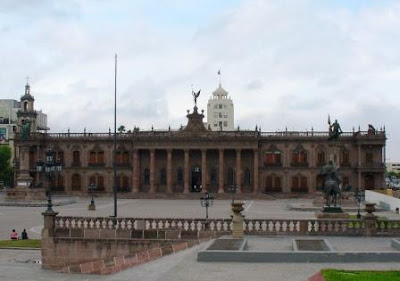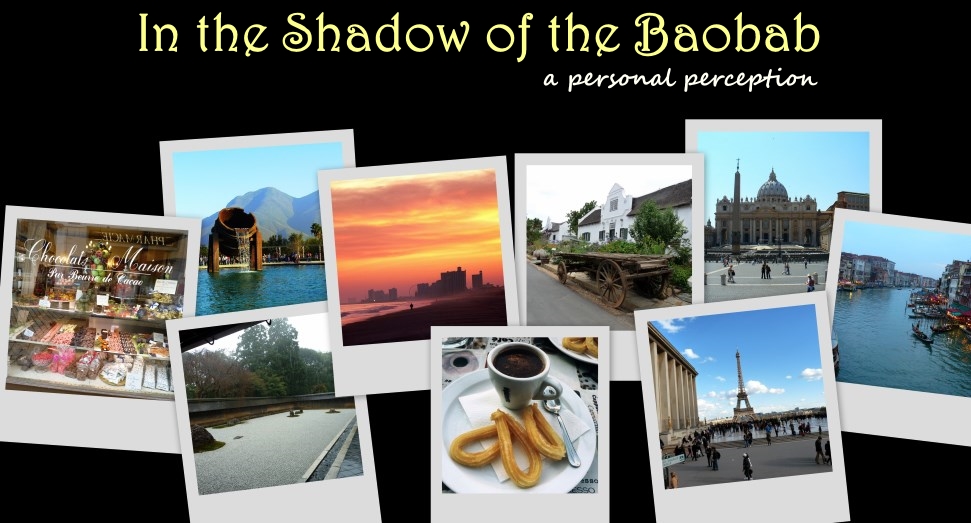

 Old Houses in the Barrio Antiguo
Old Houses in the Barrio AntiguoLooking through my previous post I was amazed to see that I have never really written about this northern city of Mexico, sometimes called the “Sultan of the North”, which I frequently visit for business reasons.
Without delving too much into history, I do tend to go over the edge on this, Monterrey was founded in 1596 by Don Diego de Montemayor and named the city in honor of the Viceroy of New Spain. A flood in 1612 washed away most of the original city, but a footprint of the Spanish era can still be seen in the Barrio Antiguo.
The city is not really a tourist mecca because it does not have much to offer in terms of pre-Hispanic culture or colonial elegance, nor does it have green valleys of vineyards or any other agricultural draws. Located south of the Texan border in a desert region, Monterrey is a valley surrounded by the jagged peaks of the Sierra Madre mountains of which the Cerro de la Silla, “saddle mountain” is the most recognized. It is though the commercial capital of Mexico, and some of the biggest companies in Mexico, i.e. Cemex, Vitro, and several others, are headquartered here.

Although it lacks old world charm, it does have a European flair and a lot of “Americana” feeling about it. The heart of Monterrey is the Macro Plaza. On one of my weekends that I stayed over in the city I explored many of the sites. The Saturday morning I went to the Museo de la Historia Mexicana, which sits on top of a natural spring. I would give the museum is fair to average rating. Although it covers most of Mexico’s history, it is seriously short on good exhibitions. Adjacent to the museum is the tranquil Paseo Santa Lucia, the spring’s outflow, with many café’s on the side of the canal. From there I walked to the northern end of the Macro Plaza, past the Justice Building to the Palacio del Gobierno (the Federal Palace), which house several government departments, but open to the public, and then to the Fuente de la Vida, a colonial style Neptune fountain in the center of the Plaza. I spent the rest of the day walking the streets of Monterrey, especially the Zona Rosa to get a good feel of the city.

The Sunday two colleagues and I took a taxi to visit the Glass Museum, the Museo del Vidrio, which is located on the premises of the Vitro Glass Company. This was quite interesting and housed some excellent examples of how glass can be use as an artistic and sculptural medium. At the time of our visit they also had a special exhibition of Napoleon Bonaparte – porcelain, clothes, furniture and many other articles of Napoleon and his queen Joshephine. From there we walk to Av. Cristobal Colon to the Railway Museum (give it a skip) and next door to the Cultural museum (another skip, you miss nothing).


From there we took a taxi to the Metrolitan Museum, which is located in the oldest standing building in Monterrey. In this building, strangely, hidden behind a cupboard now, are a room and a desk on which the USA and Mexico signed the Maquiladora contract (Inter-country trade agreement.) I say strangely, because the agreement had such a major impact on the border cities of Mexico and Monterrey in terms of job creation from US manufacturers. The museum has a small section dedicated to Monterrey’s history, and the rest is dedicated to modern art of various mediums. There was some interesting stuff there. From there we went to the Museo de Arte Contemporaneo (the MARCO museum). The front of the building is guarded by a gigantic bronze sculpture named "La Paloma" (The Dove), by Mexican artist Juan Soriano, considered the symbol of the museum. Touted as the largest art museum in Latin America, I was not very impressed with the art at the MARCO or maybe it was late in the day and I was rather tired by then. The central patio inside with its huge water feature is quite impressive though.

Entrance to the MARCO, the Contemporary Art Museum

Metropolitan Cathedral and front detail (below).

There are still several places I want to visit in Monterrey, especially the Planetarium, which I heard is quite good, and then I would like to visit the Museo del Obispado (the former bishop’s palace), built in the 18th century.
Monterrey has excellent restaurants and I have eaten at several of them. The regional specialty is Cabrito, baby goat meat, which is similar to lamb. Here it is mostly slow cooked over mesquite coals, or many hotels offer it at breakfast. Another popular steak choice is Steak Arrachera, marinated flank steak, and a good alternative to T-bone or Rib-eye steaks. My favorite is to visit local neighborhood restaurants for Taco’s or Fajita’s, which usually comes with Queso Blanco, a white cheese that is melted and topped with crumbled, spicy Chorizo sausage. Because of there freshness the tortillas in Mexico is far superior in taste than the ones you get in the US. (dah…)
I left Monterrey last Friday with disappointment, in myself, because I should have planned better. On my way to the airport I heard on the radio that Roger Waters, ex-Pink Floyd bassist, was performing that evening in town. I certainly would have stayed over until the Saturday and attend the concert if I knew this beforehand. These days I travel to Monterrey once a month and in future I will check what’s happening on the entertainment front when in town.

Upon our return from the Sunday sightseeing our taxi had a flat tire and the driver had to reapir it at the side of the highway. After the repair the car wouldn't start and we had to give it a push start.

 Golden tea set from the Napolean Bonaparte exhibit at the Glass Museum.
Golden tea set from the Napolean Bonaparte exhibit at the Glass Museum.
Fuente de la Vida - Neptune Fountain.

